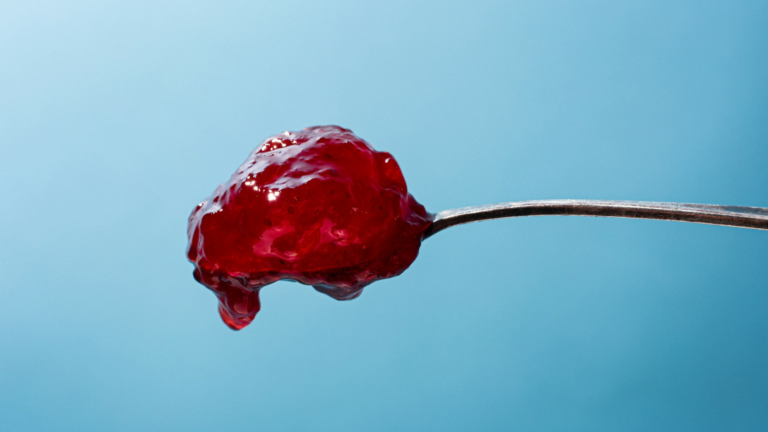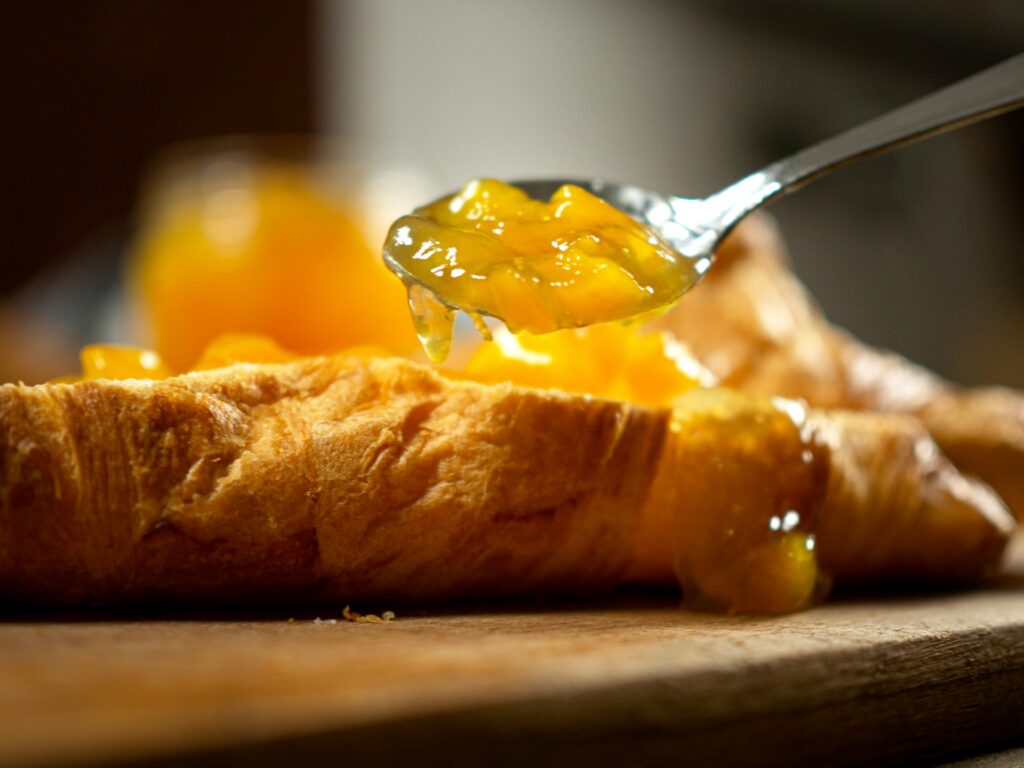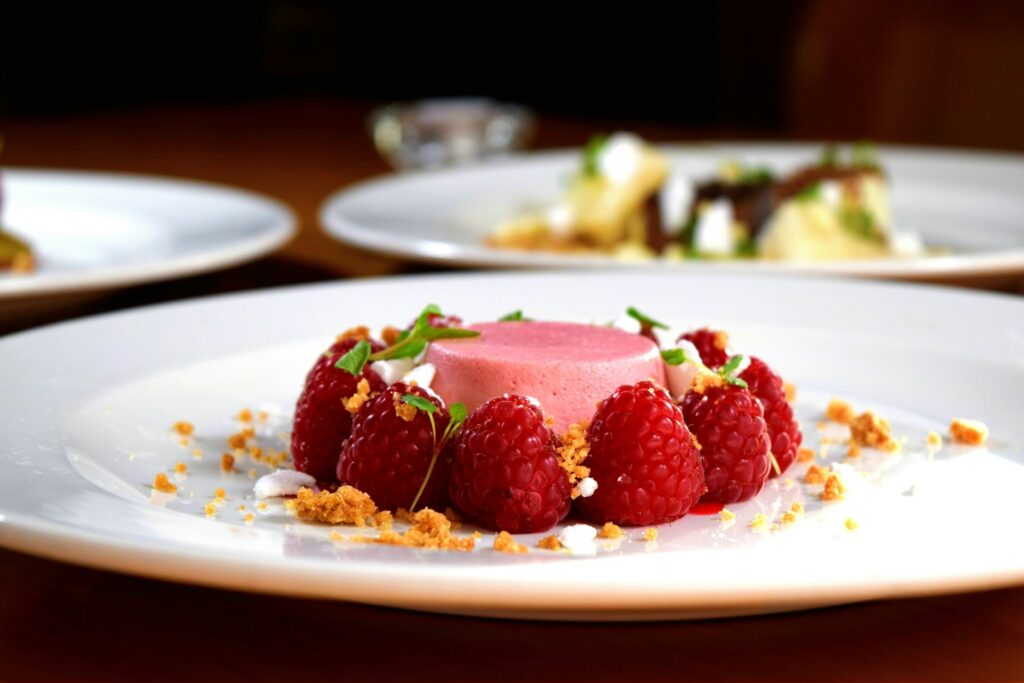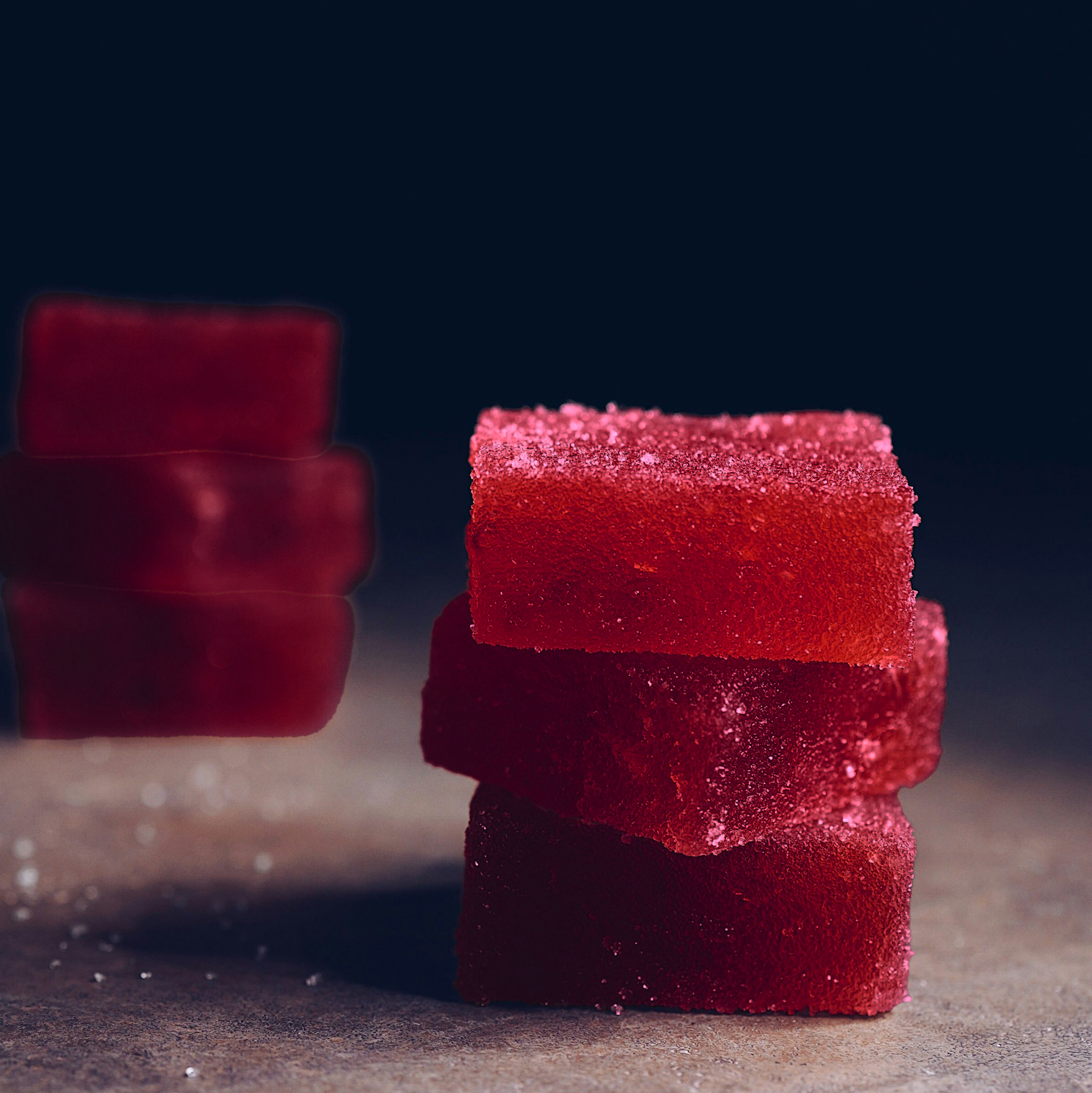Beginner's Guide to Pectin
Posted: 05 Jul 2024

Pectin: The All-Natural Additive
In the move towards cleaner label products, chefs and consumers alike are looking for ingredients that they recognise and can rely on. One such product is the thickener pectin, a completely natural chemical that is found in fruit.
If you’re new to using additives, our guide to sugars and gelling agents is a great starting point. But if you’re keen to know more about pectin and why it’s the perfect ingredient for keeping a shorter, cleaner label, then keep reading…
by Lyndsey Hall
05 July 2024
What is Pectin?
Pectin usually comes as a white-ish, crystalline powder, or sometimes a liquid, that can be added to recipes such as jams and jellies, turning liquids into a semisolid gel with a firm texture.
It’s a type of soluble fibre, a heteropolysaccharide found in fruit, especially apple and plum pomace and citrus peel. Pectin is a 100% natural product that can be used as a thickener, or in place of sugar or fat when creating lower calorie recipes.
What is Pectin Used For?
Pectin is incredibly versatile, making it a bit of a hero product in the confectionery world. When combined with fruit, fruit purees and fruit juices, it acts as a thickener and gelling agent. It’s perfect for creating set, cuttable pate de fruit, or for thickening jams, jellies and any other acidic, fruit-based dessert or confection.
To use pectin to make a fruity, soft layer in a chocolate bar or bonbon, you can blend your set pate de fruit in a blender before piping it directly into the shell. It will hold a soft, biteable texture inside the chocolate without hardening or going runny.


Is Pectin the Same as Gelatin?
Both pectin and gelatin can be used as a thickening agent, but the way they work is slightly different. When heated, pectin bonds with sugar and acid to form a sort of mesh that traps liquid. In order for it to perform correctly, the recipe needs a careful balance of acids (usually lemon juice) and sugars. Gelatin, on the other hand, is made from the protein collagen and can absorb five to ten times its own weight in water to form a gel. Gelatin is suitable for use in non-fruit-based recipes as it doesn’t require sugars and acids to set, making it perfect for setting creams and custards.
Is Pectin Suitable for Vegans?
Unlike gelatin, which is an animal bi-product, pectin is completely free from animal products and is 100% suitable for vegans. It’s a natural ‘gum’ found in plant cell walls, especially the skins and cores of slightly under ripe fruit, like apples and citrus fruits.
Is Pectin Organic?
As it is made from all-natural ingredients, pectin is organic, however it’s always best to check the ingredients before you buy. Our slow-set pectin contains only powdered pectin and dextrose, a type of simple sugar (like fructose and glucose) that’s made from corn.
What Are the Different Types of Pectin?
Yellow pectin, also known as pectin jeune, requires heat in order to set. Pectin NH is a modified form of pectin that is treated to make it non-heat-reversible, meaning it doesn’t require heat to set and is suitable for use with heat-sensitive ingredients.
You may also come across HM pectin and LM pectin, which both refer to the amount of methoxyl contained. Low methoxyl (LM) pectin can be used in recipes with less sugar, such as low sugar jams and jellies, as it requires lower amounts of sugar and acid to form a gel.
Which Fruits Are Naturally High in Pectin?
Fruits that are naturally high in pectin include tart, underripe apples, lemons and limes, unripe blackberries, plums, grapes, cranberries, gooseberries, currants and quinces. These produce enough pectin themselves to usually not require any additional pectin when making jam, jelly, etc.
On the opposite end of the scale, fruits like peaches, pears, blueberries, apricots, ripe cherries, raspberries and strawberries are all low in naturally occurring pectin and would need the addition of powdered or liquid pectin to form a gel.

And there you have it, everything you need to know about getting started using pectin. If you have any questions about the type of pectin we stock, you can get in touch with us and we’ll be happy to help.
Looking for a little inspiration? Here are a few of our recipes that use pectin, to get you started:
Apricot Cookie Dough Chocolate Bar
Apricot Pecan Praliné by Philip Koury

Lyndsey is a marketing executive, writer and lover of books and chocolate from Sheffield.
Her favourite chocolate is Cacao Barry Lactee Superieure.
.svg)
 white.svg)